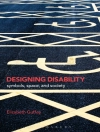A Companion to Contemporary Art in a Global Framework explores the ways specialists and institutions in the fine arts, curation, cultural studies, and art history have attempted to situate art in a more global framework since the 1980s. Offering analyses of the successes and setbacks of these efforts to globalize the art world, this innovative volume presents a new and exciting way of considering art in its global contexts. Essays by an international panel of leading scholars and practicing artists assert that what we talk about as ‘art’ is essentially a Western concept, thus any attempts at understanding art in a global framework require a revising of established conceptual definitions.
Organized into three sections, this work first reviews the history and theory of the visual arts since 1980 and introduces readers to the emerging area of scholarship that seeks to place contemporary art in a global framework. The second section traces the progression of recent developments in the art world, focusing on the historical and cultural contexts surrounding efforts to globalize the art world and the visual arts in particular global and transnational frameworks. The final section addresses a wide range of key themes in contemporary art, such as the fundamental institutions and ontologies of art practice, and the interactions among art, politics, and the public sphere.
A Companion to Contemporary Art in a Global Framework is essential reading for undergraduate and graduate students, scholars, researchers, and general readers interested in exploring global art beyond the traditional Euro-American context.
قائمة المحتويات
List of Illustrations ix
Series Editor’s Preface xv
About the Editors xvii
Notes on Contributors xix
Editors’ Acknowledgments xxvii
Introduction: The Eurocentrism of Contemporary Art, Staging the Project 1
Jane Chin Davidson and Amelia Jones
Part I Decades 17
1980-1990 17
1 I Live in the Fourth Dimension When I Create Landscapes: Artist Statement 19
Senga Nengudi
2 Seeing Beyond East/West Divides: Contemporary Art in and Around 1980s China 23
Jenny Lin
1990-2000 35
3 Is There a Line that Connects All Things? Artist Statement 37
Sutapa Biswas
4 Why Contemporary Art Is Post-Soviet 41
Angela Harutyunyan
2000-2010 55
5 Art and Politics: Artist Statement 57
Tania Bruguera
6 Maori and Pacific Art at the Turn of a New Millennium 61
Nina Tonga and Caroline Vercoe
2010-2020 75
7 Art for Abolition: Artist Statement 77
Patrisse Cullors
8 Situating African Diasporic Art 79
Nana Adusei-Poku
Part II Themes
Institutions/Ontology 87
9 COLONIALISM ‘The Whole World in his Hands’: A Decolonial Approach to European Concepts of Art 89
Claire Farago
10 PEDAGOGY The Blank Canvas and Other Myths 105
Al-An de Souza
11 CRAFT Craft and the Making of ‘Global’ Contemporary Art 119
Pamela N. Corey
12 PERFORMANCE Dreams and Visions in the Interval 133
Mlondolozi Zondi
13 EMBODIMENT/MATERIALITY Love Songs (to End Hetero-Patriarchal, Settler-Colonial, Extractivism) 149
Natalie Loveless
Politics/Public Sphere 167
14 REVOLUTION Revolution is a Circle 169
Tatiana Flores
15 ART AND ITS MARKETPLACES It Was a Small World, After All 183
Suzanne Hudson
16 PUBLIC SPHERES The Politics of Public Space in Postrevolutionary Iran 199
Talinn Grigor
17 (ANTI-)CAPITALISM The Imminent Promise and Fear of a Getaway Car 213
Raqs Media Collective
18 ENVIRONMENT Envisioning a More Just Future: Feminist Activist Art, Climate Change, and the Anthropocene 227
Lisa E. Bloom
Identity/Subjectivity 239
19 INDIGENEITY Global Futurisms: Prophetic Practices of Reclamation, Liberation, and Transcendence 241
Timotéo I. Montoya II
20 DIASPORA Transnational Collectivities of Solidarity and Affect 255
Ceren Özpinar
21 GENDER/SEXUALITY Performing the Intersection: Camp and the ‘Cat Lady’ 267
Jane Chin Davidson
22 RACE/ETHNICITY Three Forms of Appropriation: Carrie Mae Weems, Glenn Ligon, and Nao Bustamante 281
Jessi Di Tillio and Cherise Smith
23 DISABILITY Disability Justice, Community, and Performance 295
Shayda Kafai and Jennette Ramirez
Methods/Theories 309
24 POSTCOLONIAL/DECOLONIAL Post-/Anti-/Neo-/De- Colonial Theories and Visual Analysis 311
Alpesh Kantilal Patel
25 MARXISM/POST-MARXISM History, Marxism, Reality, and Utopia: The Bishan Project in China (2010-2016) 327
Ou Ning
26 CRITICAL RACE THEORY ‘The Blast Work’: Situating Critical Race Theory in Contemporary Art and Curatorial Practice 343
Kelli Morgan in Dialogue with Amelia Jones
27 POSTSTRUCTURALISM/POSTMODERNISM/POSTCOLONIALISM Mapping Poststructuralism, Postmodernism, and Postcolonialism 359
April Baca
28 GENDER/SEX THEORY Feminist/Queer/Trans Theory and Trans Embodied Methodologies in Contemporary Art: An Intergenerational Dialogue on the Page 377
Ace Lehner and Amelia Jones
29 PERFORMANCE THEORY The ‘Studies Protocols’ of Performance Studies 399
Joshua Chambers-Letson
Technology/Media 417
30 INTERNET ‘Bias Is Not a Bug. It’s a Feature’: An Interview with Hito Steyerl on Representation in the Digital Age 419
Hito Steyerl and Anuradha Vikram
31 SOCIAL MEDIA Why Is It So Hard to Look the Other in the Eye? The Selfie and its Discontents 435
Derek Murray
32 ALGORITHM Algorithms in Global Art and Visual Culture 451
Gary Kafer and Tyler Quick
Exhibition/Collecting/Archive 465
33 MUSEUM Time, Love, and the Museum 467
Florencia San Martin
34 BIENNIAL/ART FAIR Biennial as a Discursive Political System for Contemporary Art 481
Jane Chin Davidson
35 CURATING In Residence, Incarcerated Regina José Galindo’s America’s Family Prison 503
Andy Campbell
36 COLLECTING The World Should Collect Itself: Collecting Art Globally (and Other Predicaments) 517
Gerardo Mosquera
37 ARCHIVE Ghosts in the Archive: Exorcism, Resurrection and the Possibilities of Repair 529
Hammad Nasar
Index 541
عن المؤلف
JANE CHIN DAVIDSON is Professor of Art History and Global Cultures at California State University, San Bernadino. She has published widely on topics in contemporary global art, Chinese diasporic identity in the arts, performance, transnationalism, feminism, and eco-feminism. As an exhibition curator, she studies the decolonizing processes for global exhibitions.
AMELIA JONES is Robert A. Day Professor at the Roski School of Art and Design at the University of Southern California, Los Angeles. Her published work and curated exhibitions have focused on queer, feminist, and anti-racist analyses of modern and contemporary visual art and performance of the Euro-American tradition. She is Editor of A Companion to Contemporary Art Since 1945 (Wiley Blackwell, 2006).












